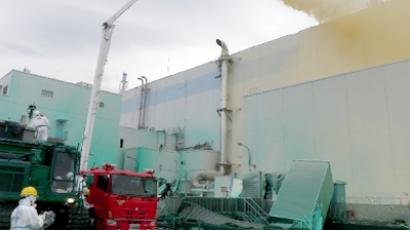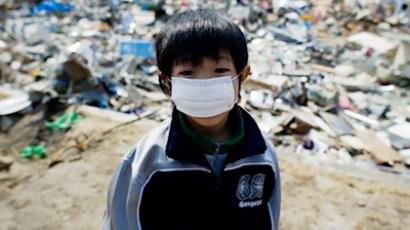TEPCO removing protective Fukushima canopy for most dangerous op yet

The protective dome over the defunct Fukushima Daiichi nuclear power plant’s Reactor 1 is being dismantled to prepare for the removal of nuclear fuel rods – one of the most difficult and dangerous tasks in the entire decommissioning process.
The canopy was installed by TEPCO, the plant’s operator, in 2011 to mitigate the damage done to the plant in the 2011 earthquake and tsunami, which led to one of the worst nuclear disasters in human history.
On October 22 it started to take the construction apart using a crane-mounted drill to make 30sq cm holes in one of the structure’s six panels, The Asahi Shimbun reports.
After the holes were drilled, the workers coated the inside of the building with special anti-scattering resin to ensure that radioactive materials still lingering after reactor meltdown would not be agitated.
The inside of the building contains a significant amount of debris left after a hydrogen explosion following the disasters. The operation will therefore require the installation of cameras inside to survey the area.
The dangerous next step in the decommissioning process comes in 2016-2017, when the workers will proceed to remove the rubble and garbage, followed by an extremely delicate process for the removal of spent nuclear fuel rods from cooling pools.
Watch our brief explanation below of what this entails.
READ MORE: Fukushima operator says “sorry” as workers erect protective cap
TEPCO can’t complete some of its objectives at this time, as it has other more pressing matters to deal with – the erection of frozen soil walls under and around Reactor 1 to keep the escaping radioactive water from seeping into the Pacific Ocean.
The plant was plagued by numerous faults, both natural and man-made, which led to a number of leaks and consequent structural damage, releasing massive amounts of radiation into the water.
One such incident was in August 2013 and involved Reactor 3, where the removal of debris led to contamination of workers as far as 500 meters away.
TEPCO has also faced a massive backlash from the government, foreign observers and Japanese citizens for its unsatisfactory handling of the crisis resulting out of the 2011 tragedy.
As though human error weren’t enough, it turned out in early October that the level of radioactivity in water around the plant has risen to record highs, following a typhoon that passed through the Japanese coastline.
READ MORE: Radiation levels at Fukushima rise to record highs after typhoon
Specifically, levels of the radioactive isotope cesium are now at 251,000 becquerels per liter, three times higher than previously recorded levels.
Cesium, which is highly soluble and can spread easily, is known to be capable of causing cancer.
The scary part about the escaping radioactive material all this time later is that no one truly knows the scope of the problem and how best to approach it. Some other measures apart from constructing frozen soil walls involved pumping off groundwater. They all had varying levels of success.














